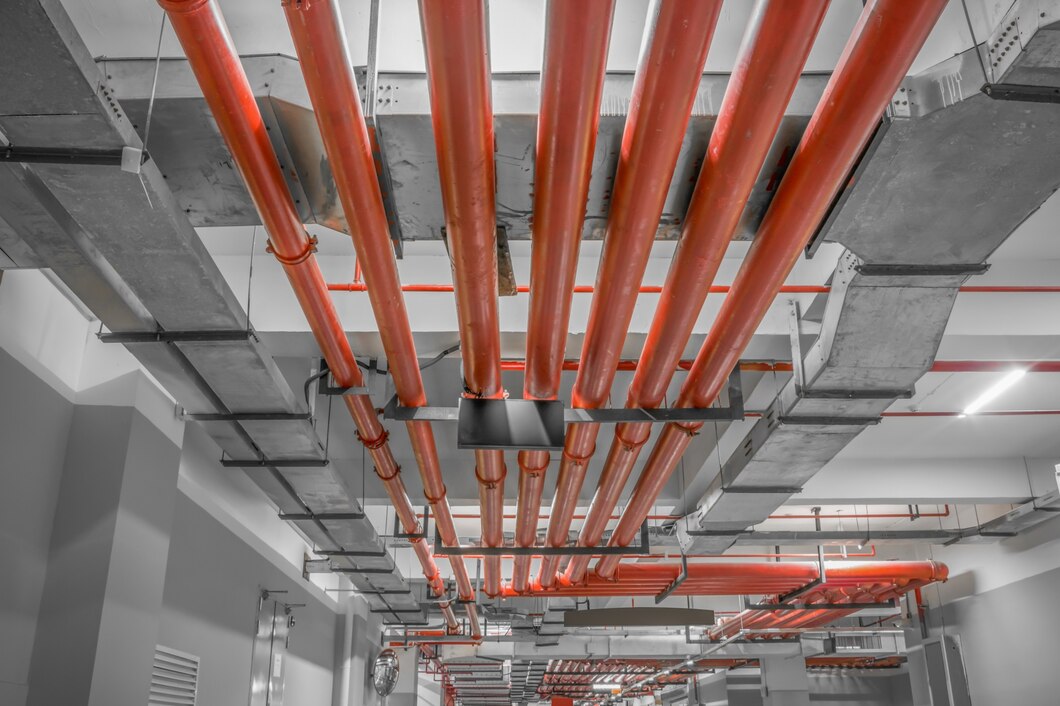Ventilation Systems
Fire Rated Ducting
Fire Rated Ducting: Enhancing Safety in HVAC Systems
Fire rated ducting plays a pivotal role in bolstering the safety of buildings by mitigating the risks associated with fire spread through ventilation systems. In this article, we will explore the significance, features, and applications of fire rated ducting, emphasizing its crucial role in ensuring the safety and well-being of occupants in various structures.

Understanding Fire Rated Ducting
Fire rated ducting, also known as fire-resistant ducting, is specifically engineered to withstand the intense heat and flames generated during a fire. These ducts are designed to inhibit the spread of fire and smoke through the ventilation system, providing valuable time for occupants to evacuate and minimizing property damage.
Key Features and Benefits
1. Fire Resistance:
The primary feature of fire rated ducting is its exceptional fire resistance. These ducts are constructed from materials that can withstand high temperatures, preventing the rapid spread of fire within the HVAC system.
2. Smoke and Flame Containment:
In addition to resisting fire, fire rated ducting is designed to contain smoke and flames. This containment is crucial in preventing the smoke and fire from traveling to other parts of the building, allowing occupants to evacuate safely.
3. Compliance with Building Codes:
Fire rated ducting is often a mandatory requirement in building codes and regulations. Compliance with these standards ensures that HVAC systems contribute to the overall fire safety of a structure.
4. Integrity and Insulation Ratings:
Fire rated ducting comes with integrity and insulation ratings that specify the duration for which the ducts can maintain their structural integrity and prevent the passage of flames and heat. Common ratings include 60, 90, and 120 minutes.
Applications in HVAC Systems
1. Commercial and Residential Buildings:
Fire rated ducting is essential in both commercial and residential buildings where ventilation systems are prevalent. These ducts safeguard occupants and property by containing fire within the HVAC infrastructure.
2. High-Risk Areas:
In facilities with a higher risk of fire, such as industrial plants, laboratories, and kitchens, fire rated ducting is a critical component. It helps prevent the rapid escalation of fires and ensures a safer environment for occupants.
3. Escape Routes and Common Areas:
Fire rated ducting is strategically installed in escape routes and common areas of buildings. This includes stairwells, corridors, and lobbies, where the controlled spread of fire is crucial for effective evacuation.
4. Retrofits and Upgrades:
Fire rated ducting is often used in retrofitting projects or system upgrades where existing HVAC systems need enhancements to meet modern safety standards. This ensures that older buildings are brought up to code.
Types of Fire Rated Ducting
1. Fire Rated Flexible Ducts:
Flexible fire rated ducts are designed for applications where flexibility is required. These ducts can bend and adapt to the layout of the building while still providing fire resistance.
2. Fire Rated Rigid Ducts:
Rigid fire rated ducts are constructed from rigid materials such as metal and provide enhanced structural integrity. They are commonly used in applications where a more robust solution is needed.
3. Intumescent Coatings:
Some fire rated ducting is treated with intumescent coatings. These coatings expand when exposed to heat, forming a protective barrier that helps contain fire and smoke.
Environmental Considerations
1. Safety and Occupant Well-being:
The primary environmental consideration of fire rated ducting is its contribution to the safety and well-being of building occupants. These ducts play a crucial role in creating a secure environment during a fire emergency.
2. Property Protection:
Fire rated ducting helps protect property by preventing the rapid spread of fire. This minimizes the extent of damage and facilitates a quicker recovery process after a fire incident.
Conclusion
In conclusion, fire rated ducting is a fundamental element in the realm of fire safety and HVAC systems. Its ability to resist fire, contain smoke, and adhere to strict building codes makes it an indispensable component in a wide range of structures. As safety standards continue to evolve, the importance of fire rated ducting in creating secure and resilient buildings remains paramount.

